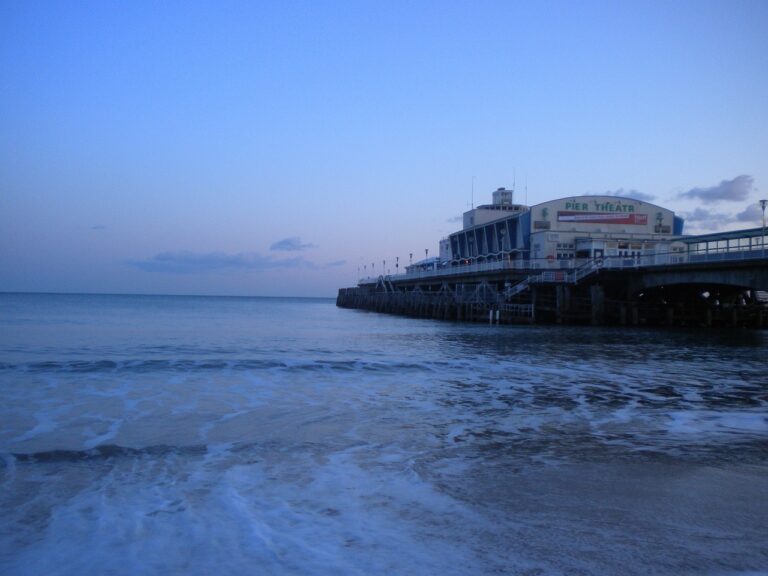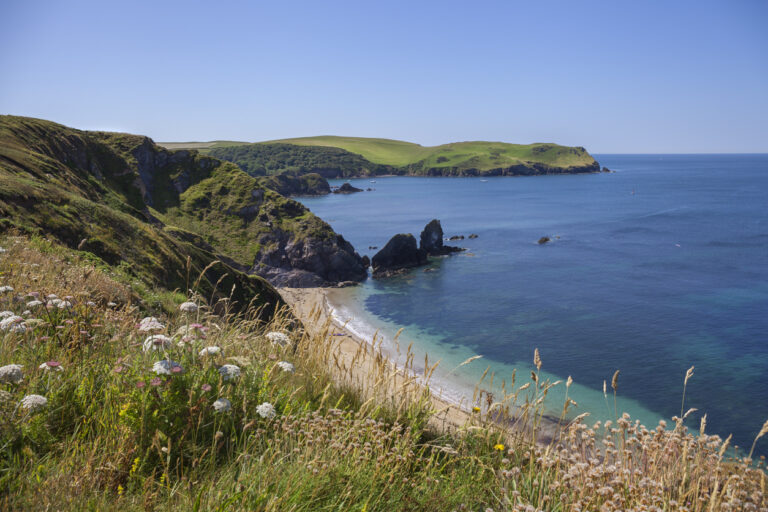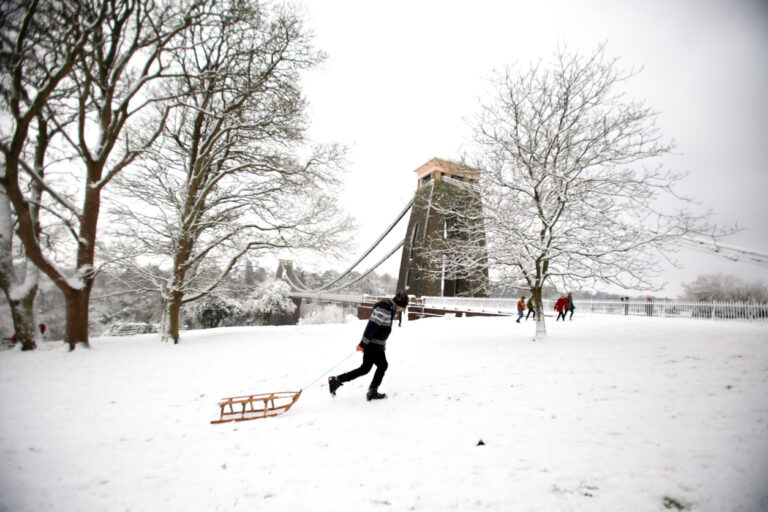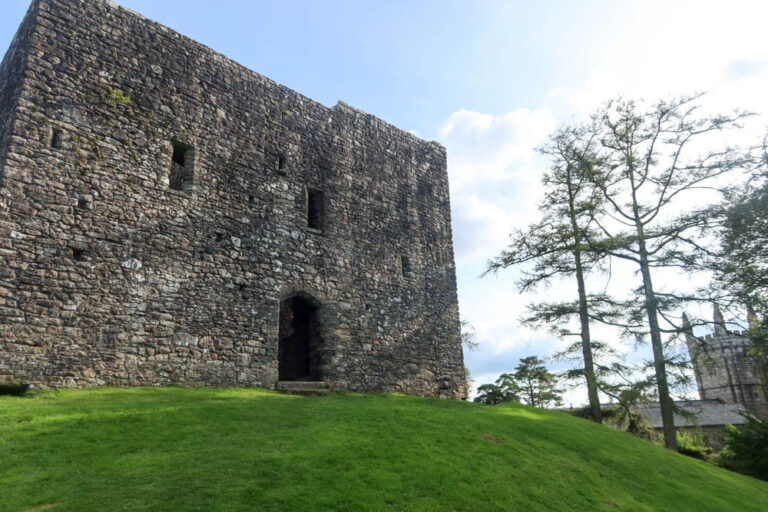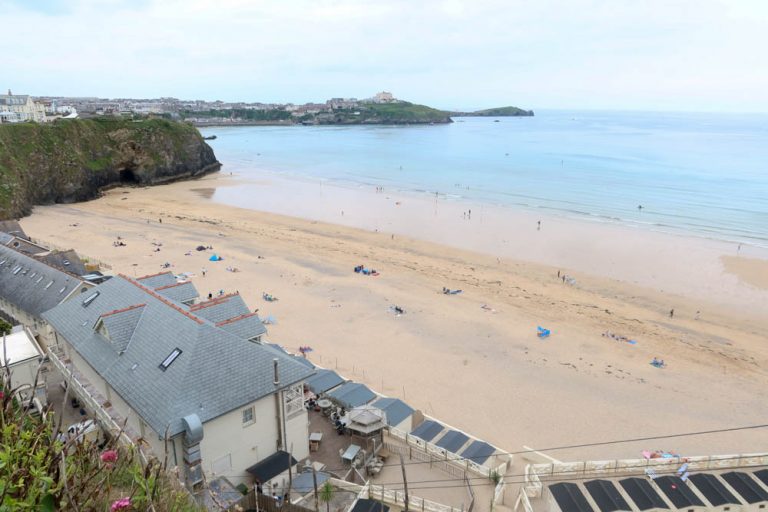30 best things to do in Devon (by a local!)
There are so many things to do in Devon, from the beaches to the moors to the epic historic towns and cities. Take a look at this list of the county’s top attractions!
The second-largest county in England, Devon sprawls across a large part of the South Western peninsula.
Encompassing two foreboding moorlands and leading out to jagged cliffs that plunge down to glimmering golden beaches, Devon’s idyllic for nature lovers; although there’s much more than meets the eye here.
Boasting a surprising amount of family attractions (such as the UK’s largest aquarium) and historic landmarks (Exeter Cathedral, Totnes Castle and the world’s oldest gin distillery to name a few!), Devon really does have something to offer any tastes and travel styles.
I’m an Exmouth local (which is a town in East Devon) and have spent much of the last few years exploring all of these top Devon attractions.
So, whether you’re looking for the most picturesque fishing village in the region (most people say Clovelly, but my vote goes to Branscombe) or want to know exactly how to fill a summer holiday in Devon, this blog post is for you!
Top things to do in Devon
Bask on sandy beaches, visit the two national parks or enjoy ancient ruins… there’s so much diversity in Devon! Here’s my list of the best things to do in this county in South West England.
1. Hike on the Western Jurassic Coast
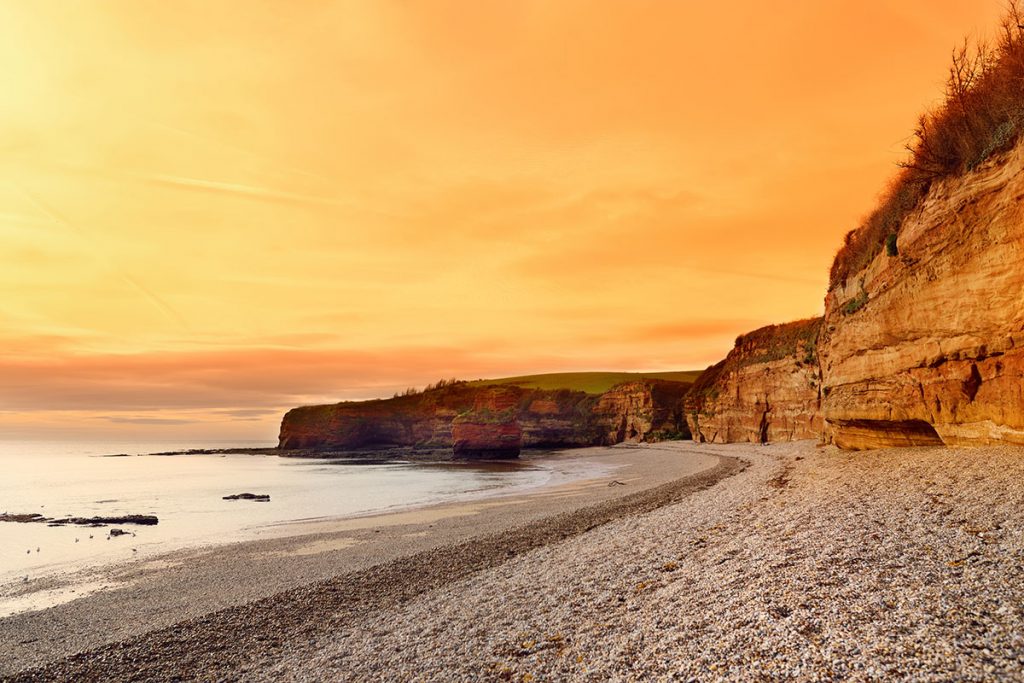
Spanning 95 miles to Old Harry Rocks near Bournemouth in Dorset, the Jurassic Coast is one of the country’s best coastal routes.
Enjoy beautiful cliff scenes, beach towns and, of course, fossils on this stretch!
Designated a World Heritage Site in 2001, this stretch of coastline has 185 million years of history throughout the Triassic, Jurassic and Cretaceous periods.
In non-geological terms, that means that the sea has been forming these cliffs since the dinosaurs were around!
This is why you’ll see so many arches, stacks and stumps while exploring the coastline.
Exmouth has the oldest rocks on the coastline, so if you are into geology, make sure that you check out the difference between the rocks here and those further east.
Visit Exmouth has a good recap of the history of the area.
You can hike along the Devon Jurassic Coast, but it’ll take a few days!
If you just want to do one walk, I recommend the following:
- Exmouth to Budleigh Salterton
- Otterton Loop Walk
- Ladram Bay to Sidmouth (out and back)
- Sidmouth to Branscombe
- Branscombe to Beer
- Beer to Seaton
All of these walks are on the South West Coast Path.
2. Explore the Beer Quarry Caves
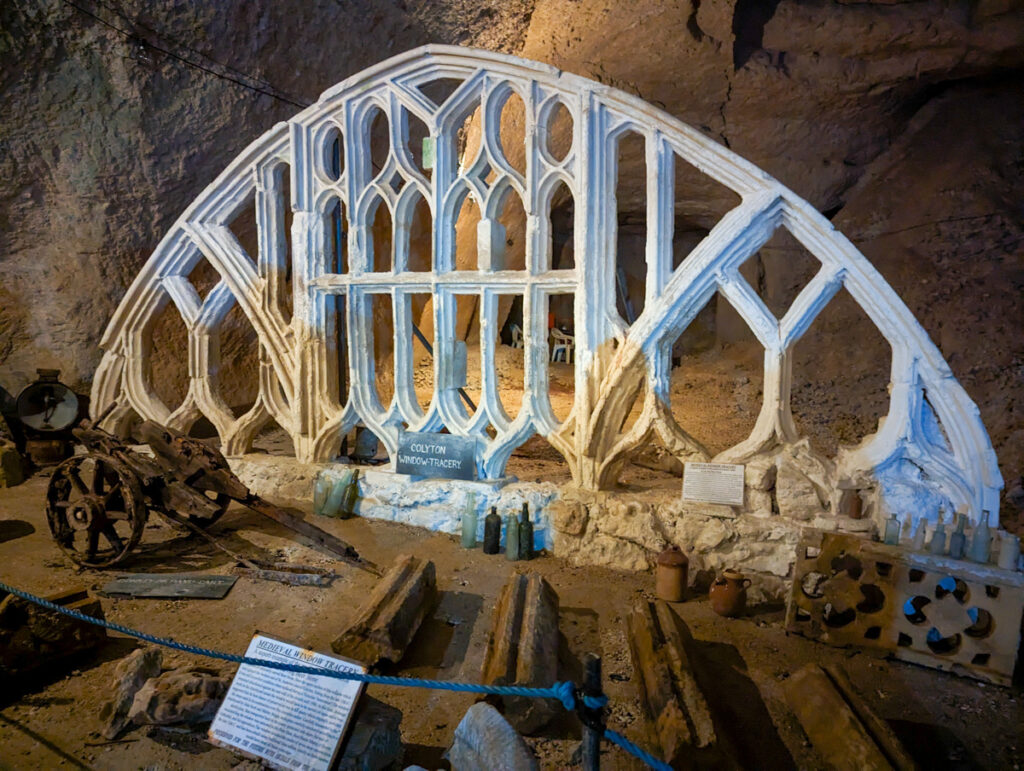
Venture just outside of Beer Village to uncover the Beer Quarry Caves.
Carved from the cliffs of Beer Stone, a material praised for its unique combination of malleability and durability, these caves have stood the test of time since the Roman era.
This very stone has shaped landmarks like Exeter Cathedral and Westminster Cathedral, not to mention numerous churches dotting the West Country.
Embark on a guided tour of the Beer Quarry Caves and take a rare glimpse into the past.
The knowledgeable guides share tales of Roman beginnings, the hardworking miners who toiled here, and even the seasonal bat residents who call these caves home during winter (don’t worry, they holiday elsewhere in summer!).
3. Take a ride on the Seaton Tramway

Hop on the Seaton Tramway and get ready for a throwback to yesteryear!
This vintage electric tram, surprisingly petite and cosy, traverses through the Seaton Wetlands Nature Reserve, up to Colyford and ultimately Colyton.
Despite covering just three miles, the tramway’s a lovely microcosm of Devonshire rural life, with rolling riverside views and relaxed country villages.
The tramway ends in the picturesque town of Colyton, a place seemingly untouched by time.
Here, you’ll find a 12th-century church with a distinctive octagonal tower and an array of historic houses.
After exploring, you can take the tramway back to Seaton – and check out all of the best activities here!
4. Enjoy a pub lunch in the quaint village of Branscombe
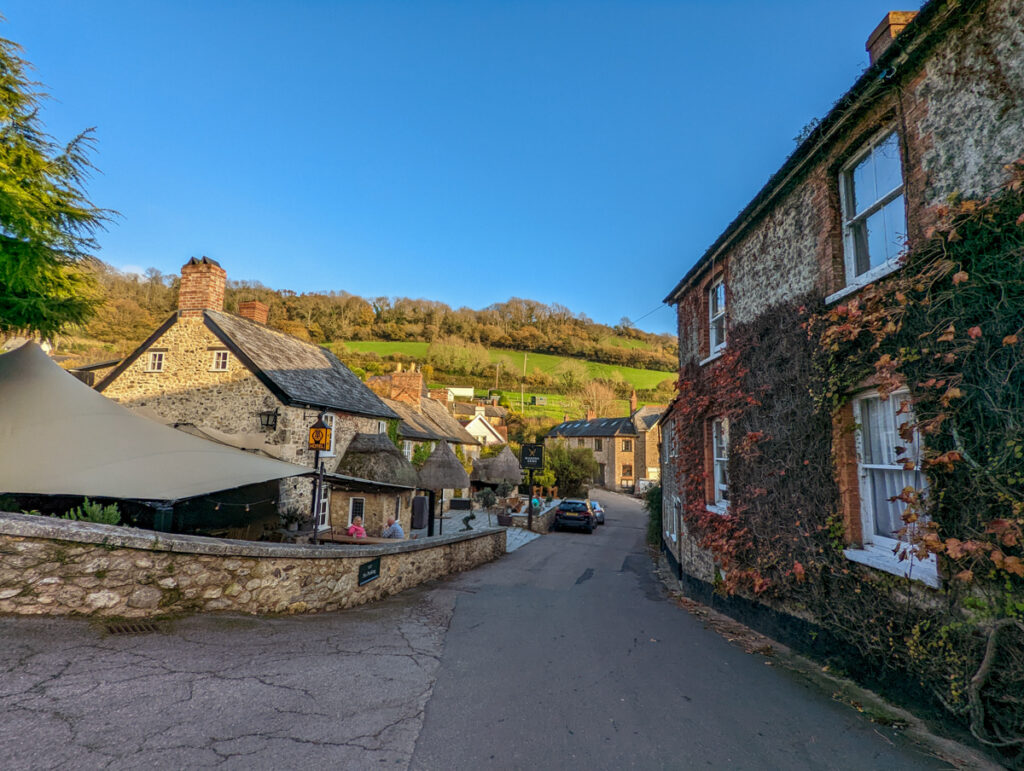
Branscombe, which has the rather impressive moniker of the UK’s longest village, is situated amidst Jurassic Coast cliffs.
Known for its quaint thatched-roof cottages and shingle beach where, if you’re lucky, you might find a fossil, Branscombe is small, calm and relaxed. It’s also my favourite fishing village in Devon!
But one of my favourite things about Branscombe is its inviting 14th-century inn.
The Masons Arms is a 14th-century pub that sits at the village’s heart amidst beautiful cottages.
It oozes tradition, with timber frames, a low-beamed ceiling, and a roaring log fire – perfect for those chilly winter nights!
The bar boasts a wide selection of drinks, featuring West Country ciders, beers, and gins.
The menu is a delightful mix, with classics like fish and chips (traditional and a vegan banana blossom version), roasted celeriac, steaks, salads, and burgers.
5. Take a Red Coat Walking Tour in Exeter

Most people come to Devon for nature, but Exeter is actually one of the oldest cities in England!
Built by the Romans, it’s a fascinating city featuring the narrowest street in England, 14th-century underground passageways, and one of the most striking cathedrals in the country – more on that in a moment!
Exeter was, at one point, the heart of Devon’s woollen cloth trade and built up to become a rather prosperous city. It was a religious centre, thanks to the Cathedral, which only added to its immense wealth.
However, the woollen cloth industry’s collapse saw the start of Exeter’s decline (although it was still a tourist and Ecclesial hub). It was also impacted by the Baedecker Raids in World War Two.
Take a red coat walking tour to learn about it all!
6. Visit Exeter Cathedral

Dating back to the 7th century, Exeter Cathedral encompasses the world’s longest uninterrupted Medieval gothic vaulting. Walking inside feels like you’re in Hogwarts!
Initially a Norman structure, the cathedral underwent a significant transformation in the Decorated Gothic Style, taking about 150 years to complete.
Characters are sculpted into the exterior – on the West Front Image Screen alone, which was once painted in vivid colour, the sculptures span around 700 years of history because the sculptors kept dying of the Black Death and needed to be re-hired!
Inside, the cathedral’s vaulting, Minstrels’ Gallery, Great East Window, and Astronomical Clock are among the highlights.
7. Go underground at Exeter Tunnels
Exeter’s also home to Britain’s only accessible underground medieval passages. These were once vital for sourcing clean water.
Now, they’re a journey through history, accessible through guided tours. You’ll learn all about Medieval Exeter, complete with stories that’ll make your toes curl about hygiene, superstitions and even the odd ghoul!
Advance booking is necessary.
A word of caution: These are not for the faint-hearted or claustrophobic. Small children might find the shadowy tunnels a bit overwhelming.
8. Hike – or cycle – along the Exe Estuary
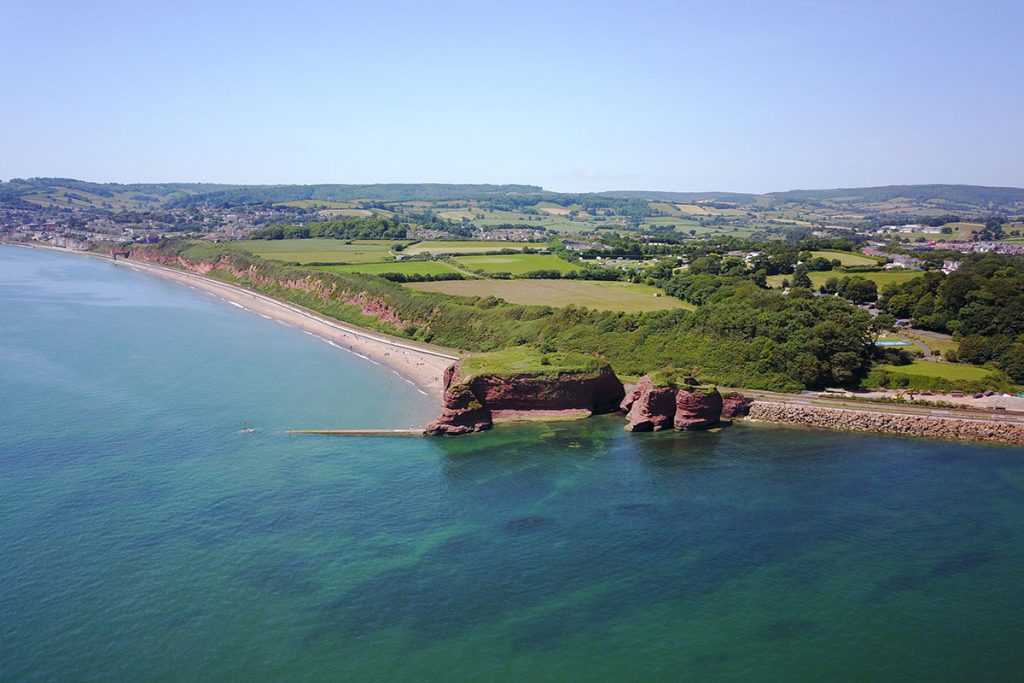
The Exe Estuary is the southernmost part of the River Exe. It starts at Exeter and leads due south to Exmouth on one side and Dawlish Warren on the other.
I’ve spent a lot of time walking, jogging or cycling up and down this estuary, as I live in Exmouth!
The waterway connects picturesque villages like Lympstone and Exton, a 600-year-old castle looming on the other side.
It’s known amongst twitchers for being one of the best places in England to see Avocet birds (our railway line is literally called “The Avocet Line”) – so pack your binoculars if you’re keen to spot them!
Take on the 26-mile Exe Estuary trail – hike and enjoy a unique boat crossing, or drive, stopping at enticing points along the way.
Exmouth boasts seaside vibrancy; Lympstone, with its quaint streets, is a glimpse into tranquil village life.
Topsham’s rich history unfolds beside the water, and Dawlish Warren’s peaceful shores (well, out of school holidays, at least!) are perfect for relaxing.
It’s a hidden gem in Devon and one that you shouldn’t miss out on!
9. See Powderham Castle
Occupied for over 600 years by the Courtenay family, the Earls of Devon, Powderham Castle is a grand castle home and estate.
Most significant during the Civil War, there’s history at every step at Powderham Castle, and you can discover its fascinating past through a guided tour.
Don’t miss the exquisitely landscaped gardens, ideal for a leisurely picnic, all set against the backdrop of the Exe Estuary.
Note that this privately owned castle is not part of the National Trust (some of the Courtenay Family actually still live here!).
10. Laze on a beach

There are few parts of the UK with as beautiful beaches as Devon.
The rugged Atlantic Coastline in the north sees dramatic cliff scenes and tucked-away coves, whereas in the south, golden sands are lined with palm trees.
Here are some of the best beaches in Devon:
- Woolacombe Beach: Known for its long, golden sands, Woolacombe Beach is a haven for surfers and sunbathers alike. Its lively atmosphere and consistent waves make it a favourite among beachgoers of all ages.
- Exmouth Beach: This beach is a blend of sandy shores and leisure activities, ideal for families. The long stretch of sand is perfect for beach games, while the nearby amenities cater to all your seaside needs.
- Slapton Sands Beach: Offering a unique combination of natural beauty and historical significance, Slapton Sands is a pebble beach that’s ideal for quiet walks and reflective moments. It’s also a site of rich wartime history.
- Blackpool Sands Beach: Nestled in a sheltered bay, Blackpool Sands is known for its crystal-clear waters and fine shingle. This beach is a slice of tranquillity, perfect for those seeking a peaceful day by the sea.
- Oddicombe Beach: A picturesque beach accessed by the famous Babbacombe Cliff Railway. Oddicombe is a mix of sand and pebble, renowned for its calm waters and scenic surroundings, making it a great spot for swimming and relaxing.
11. Go surfing in North Devon

Thanks to its location on the Southwest peninsula (bordering the Atlantic Ocean) North Devon consistently ranks as a top surfing destination in the UK.
The Atlantic waves here welcome surfers year-round. It’s little-known that North Devon is actually a World Surfing Reserve!
From beginners eager for their first lesson to experienced surfers in search of challenging waves, Devon’s surf spots have it all.
North Devon is known for its popular surfing beaches like Woolacombe and Saunton, and these are among the best places to surf in the county. I’d definitely recommend starting here (or in Westward Ho!) if you’re looking to go surfing in Devon!
12. Hike up a tor on Dartmoor
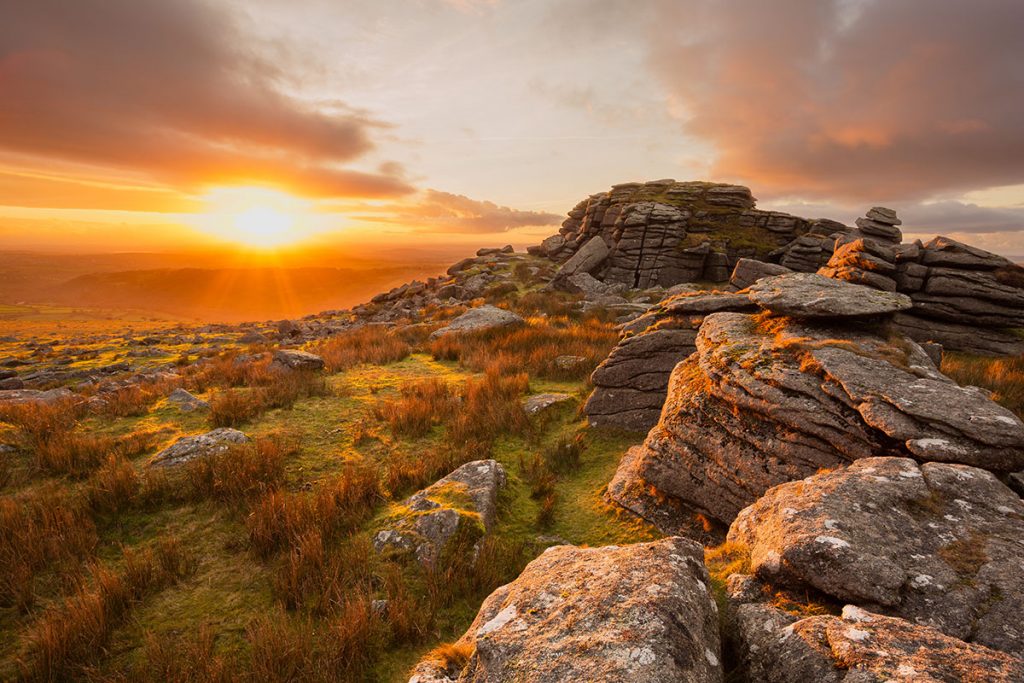
Dartmoor, England’s largest national park and one of its most impressive landscapes, is renowned for its tors – striking rocky outcrops that rise abruptly from the moor.
With over 160 tors scattered across the national park, you could climb a new one every day for six months!
Some tors in particular stand out for their unique features and breathtaking views.
- Saddle Tor is an accessible gem in southern Dartmoor. Resembling a saddle from certain angles, it comprises two large granite boulders atop a hill. Easily reachable by road, Saddle Tor offers panoramic views of eastern Dartmoor on clear days.
- Hound Tor is another must-visit. Renowned for its weathered granite summit, it overlooks Hundatora, a deserted medieval village. The remnants of four Dartmoor longhouses and Bronze Age land make it a haven for history enthusiasts.
- Nearby, Haytor Rocks, or Hey Tor, ascend to 457 meters. A climber’s paradise, its summit grants sweeping views of Dartmoor’s expanse. However, its popularity means it’s often bustling, especially in summer.
- On the western edge, Brentor Church is rather unique. It’s not granite but formed from ancient lava, the church atop the tor exudes a mystical aura!
- Leather Tor, overlooking Burrator Reservoir is popular with climbers. It’s quite a challenge to get up here, but you’ll be rewarded with views across the park’s western side.
- Nearby, Pew Tor stands out with a vast collection of summit rocks.
13. Visit the country’s quirkiest pub
The Highwayman Inn is an absolute must when you’re in Dartmoor!
It’s a pub decked out with trinkets from all corners of the globe. There’s even a section styled like an 18th-century ship and a skeleton guarding the entrance.
The pub’s history goes way back to the 13th century when it started as a coaching house and local meet-up spot.
It first got its fame as “The Golden Fleece” in the 17th century. Fast forward a bit, and it was revamped to “The New Inn” to keep up with the times. Today, it’s known as “The Highwayman Inn,” a nod to the romantic tales of highwaymen galloping across the moor.
Check out its quirky exterior, including a carriage-shaped pink door. Then there’s the giant shoe out back and the eclectic collection of heirlooms inside!
If you’re into all things quirky and offbeat, this pub is your kind of place.
Do book ahead, as it’s a fairly small but ever-popular place!
14. See the enchanting Wistman’s Wood on Dartmoor (or other, less-visited temperate rainforests)
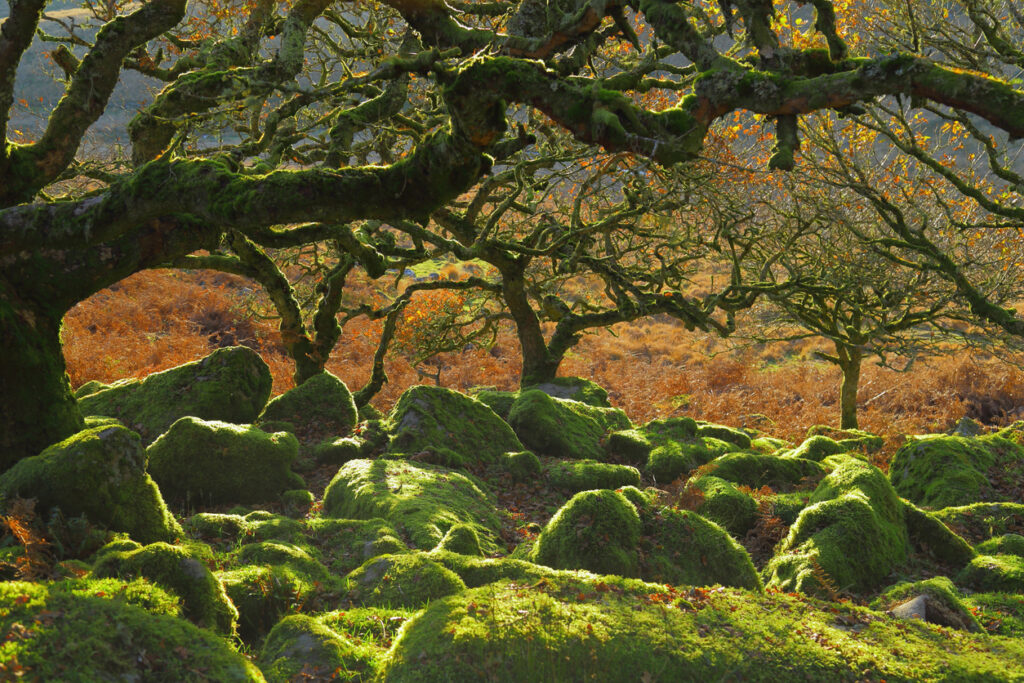
Wistman’s Wood in Dartmoor is like stumbling into the Forbidden Forest from Hogwarts!
Tucked away near Two Bridges, this spot is a remnant of the ancient woodlands that once cloaked Dartmoor.
Nowadays, these woods are a rare find, and Wistman’s Wood is the most mystical of them all.
Just a half-hour walk from Two Bridges, and you’re in a different world.
Trees twist around a floor littered with boulders, all draped in a blanket of moss.
That said, Dartmoor authorities are trying to encourage people to not walk on the boulders and just admire from the outside, to protect the natural environment.
For a less-touristy alternative, check out Auswell Wood.
Known as “The Lost World”, this hidden gem near Widecombe in the Moor is a bit off the beaten path but so worth the detour.
Wander along its quaint circular trail, surrounded by tall, evergreen trees and a network of branches.
And while you’re there, don’t miss Auswell Rocks – an ancient stone circle!
15. Check out one of Dartmoor’s waterfalls
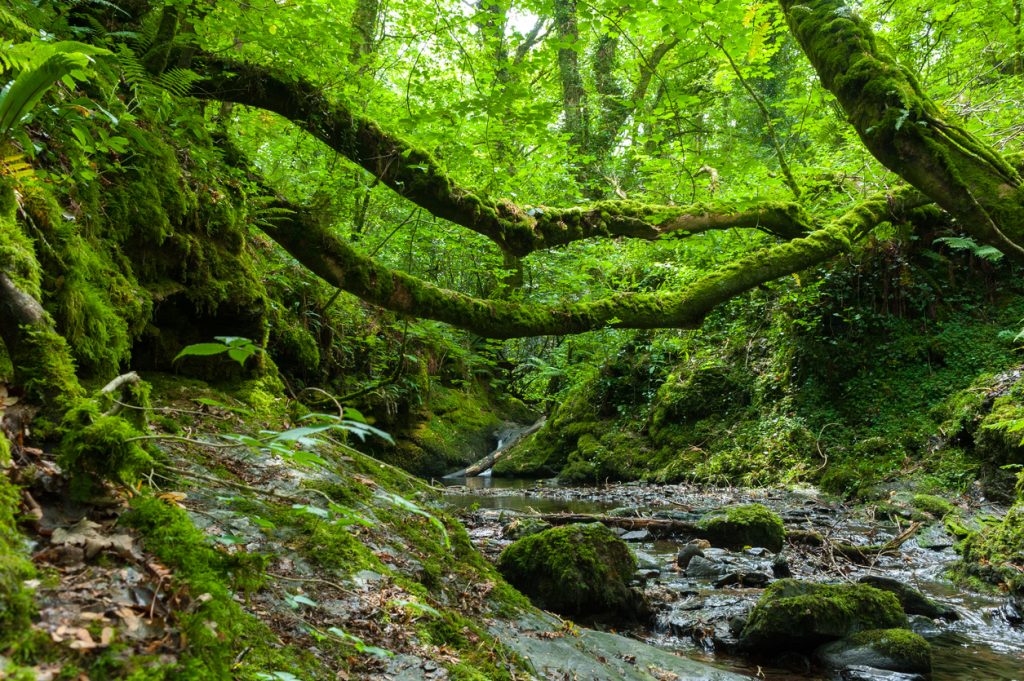
Once you’ve seen the tors and temperate rainforests, don’t miss Dartmoor’s waterfalls!
First up, Becky Falls, a woodland near Bovey Tracey.
Part of Bovey Woods, it’s home to a network of trails, a babbling brook and of course, the waterfall itself. There is an entry fee to see these falls – more information in my dedicated post.
Then there’s Lydford Gorge – the deepest gorge in England!
Home to the mesmerizing Whitelady Waterfall, this place is magical, with moss-draped trees, serene streams, and trails that transport you to another world.
It’s a National Trust property, so members get in free (find out more about joining here), or it’s £9.00 for entry. Dive into my Lydford Gorge guide or explore more Devon waterfalls here.
And don’t forget about Cantonteign Falls! Sitting on the edge of the moor, this beauty is one of the highest waterfalls in England.
Check out the rest of Dartmoor in my full list of the very best things to do in the National Park!
16. Hike around Exmoor

Hiking in Exmoor? You’re in for a treat!
This West Country national park, sprawling across Somerset and Devon, is a hiker’s paradise.
It boasts rugged, wild moorlands and rollercoaster-like cliffs leading down to hidden beaches.
First, head to the mystical Valley of Rocks near Lynmouth, a place so ancient it dates back to the last Ice Age.
This leads on to the South West Coast Path, which spans along all of Exmoor’s coastline, although it’s akin to a rollercoaster with all the ups and downs.
If you’re lucky, you might spot some of Exmoor’s famous wild ponies while you’re hiking.
17. Ride the Lynton-Lynmouth water-powered funicular
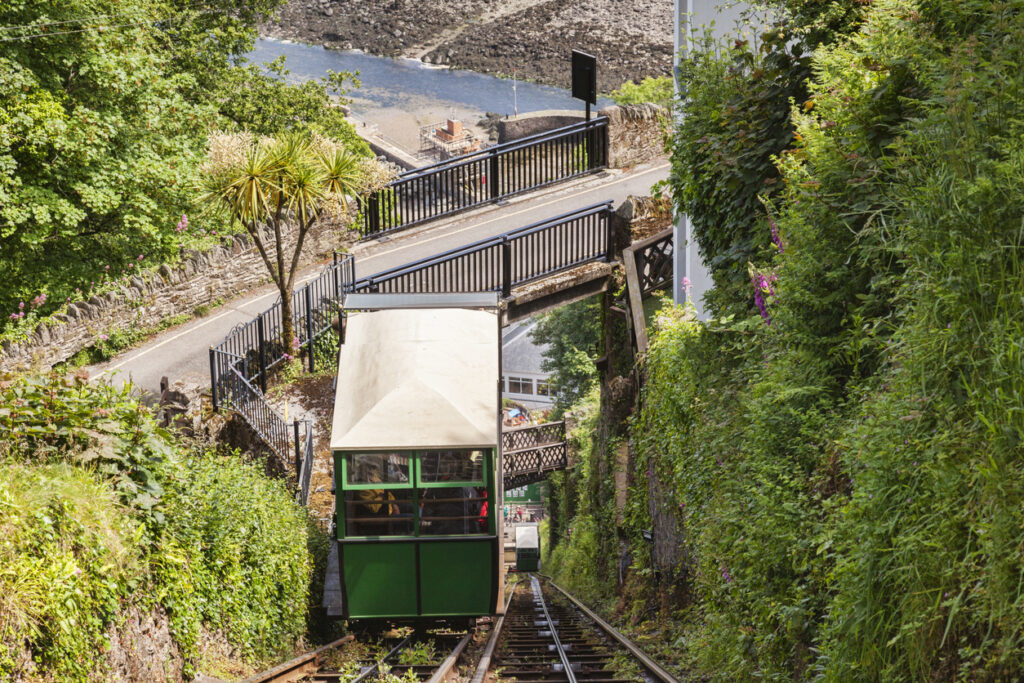
Lynmouth and Lynton’s main attraction? The funicular railway! It’s the last of its kind in the UK, a fully water-powered marvel.
It uses water from the East Lyn River, balancing two carriages by gradually shifting water between them.
Once, these water railways were more common, even in places like Clifton in Bristol. But now, Lynmouth’s is the last remaining in the country.
Hop on this Grade-II listed heritage railway for an unforgettable journey and unparalleled views of Lynmouth!
At the top, The Cliff Top Cafe awaits. It’s the perfect spot to indulge in a classic Devonshire cream tea (cream first!) with a view that makes it all the sweeter.
18. Take a boat over from Ilfracombe to Lundy Island
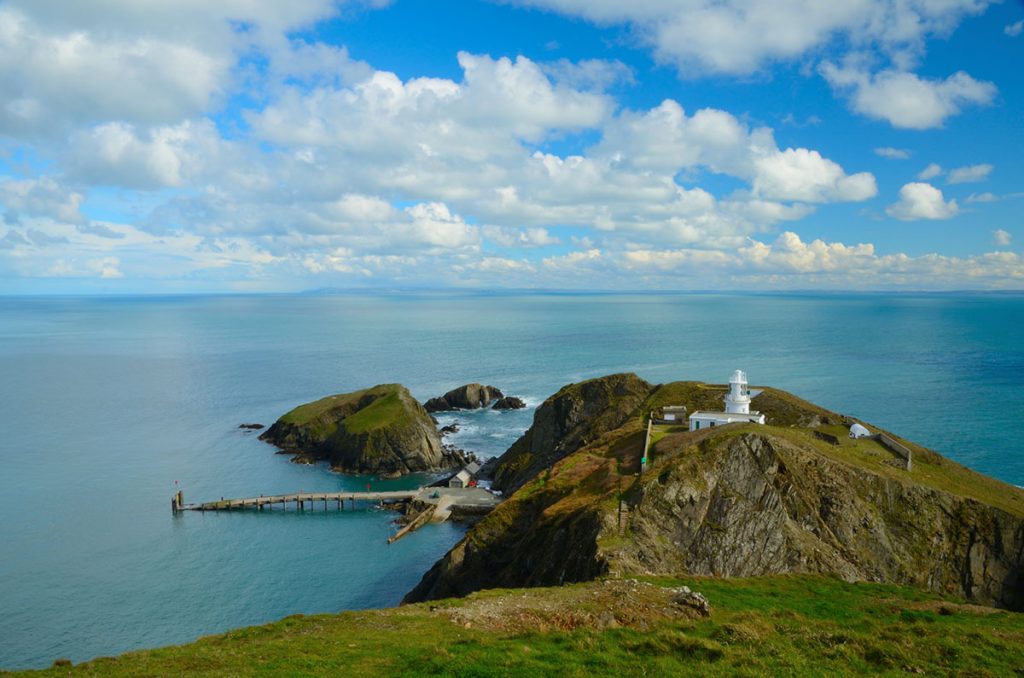
Dubbed ‘The English Galapagos’, Lundy Island is located in the Bristol Channel and is an extraordinarily unique island for its flora and fauna, with a fascinating history.
Owned by the National Trust and managed by the Landmark Trust, Lundy Island is without a doubt one of the most beautiful places to visit in North Devon.
Take a boat over for a day trip from nearby Ilfracombe (you can also stay overnight) to enjoy all of the island’s intriguing draws.
Hike around with no disruption from cars and roads, look out for its unique birds, or go diving in its unusually (for Britain!) clear waters and wrecks.
To learn about its fascinating history, take a ranger walk to learn about tales of smuggling, the time when Moroccan pirates invaded the island or when ownership of it was fought over.
19. Take a walk down the cobbled streets of Clovelly

Step back in time by visiting Clovelly, which is like walking into a living, breathing 19th-century postcard.
Situated along the western North Devon coast, Clovelly has been meticulously restored to its 1800s splendour and now is a living showcase of what life was like back then.
Stroll down Clovelly’s main street, a steep road flanked by charming historic buildings. As you meander down, the village’s bygone era comes alive.
With the buildings and the stunning views of the harbour, there’s a romantic air about the place. But it’s not all picturesque views; the village’s museums tell stories of past hardships, especially when fishing was the lifeblood of Clovelly.
There is an entrance fee to enter Clovelly (it’s privately owned and managed), and your fee goes towards helping to upkeep the village.
20. Go underground at Kent’s Cavern Caves
On the edge of Torquay lies a fascinating slice of history: Kent’s Cavern Caves, which date back to the Stone Age.
In fact, Kent’s Cavern holds the title of the oldest known cave system in Britain.
We’re talking a staggering 500,000 years!
It’s also both a Scheduled Ancient Monument and a Site of Special Scientific Interest.
Dive into the depths of time with more than 80,000 artefacts found here, evidence of human activity spanning hundreds of thousands of years.
The stalagmite floors are a record of ice age cycles, with layers dating back 400,000 years and the uppermost floor being a relatively youthful 12,500 years.
Want to see it for yourself? The caves are open for guided tours only, kicking off at 10:00 am every day. Make sure to book your tickets on their website.
21. Enjoy the scenic Dartmouth Castle (right by the sea)
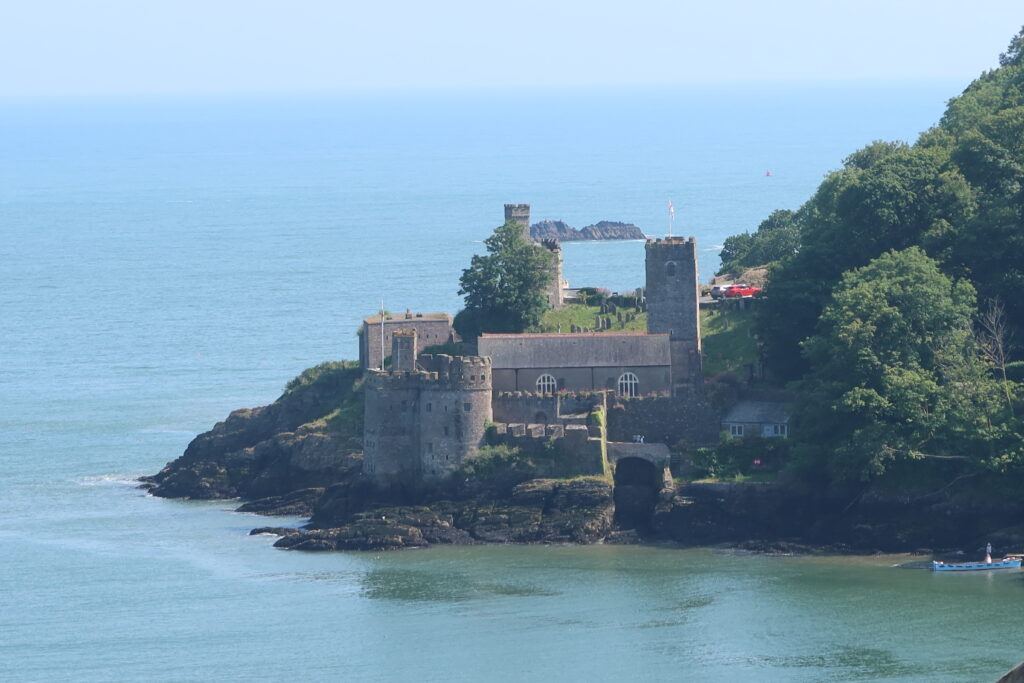
Perched on a headland with sweeping views of the estuary and sea, Dartmouth Castle has been a defining feature of the town since the 14th century.
This historic fortress played a crucial role in the defense of the South Coast.
Fears of enemy ships invading through Cornwall and Devon’s estuaries led to the construction of castles along the coast, including Pendennis and St Mawes Castles in Cornwall.
Dartmouth Castle’s story is one of evolution and adaptation. Initially under the town’s ownership, it eventually fell into the hands of Sir Peter Carew.
Fast forward to the Victorian era, and the castle saw further fortifications with modern artillery, preparing for potential attacks on Plymouth.
Today, Dartmouth Castle is a serene spot on the River Dart, a far cry from its defensive past. Managed by English Heritage, it’s a fantastic tourist attraction.
Check out the rest of the best things to do in Dartmouth, too!
And if you’re an English Heritage member, you’re in luck – you can explore Dartmouth Castle and loads of other historical sites for free! I’ve been a member for years and absolutely love it. Check out my full English Heritage membership review.
22. Take a ride on the Dartmouth Steam Railway

Hop on the Dartmouth Steam Railway for a nostalgic journey from Kingswear to Paignton!
This vintage railway adventure is a South Devon highlight, blending the romance of steam travel with the stunning, ever-blue Dart Estuary.
Starting from Kingswear, a quaint village, the journey takes you to Paignton, a lively town with a bustling seafront and beautiful beaches.
You’ll ride aboard heritage locomotives like the 1920 Hercules, pass through picturesque stations like Goodrington, and along the spectacular Torbay coastline. It’s a step back into the golden age of rail travel.
23. Take an Agatha Christie walking tour (or visit her summer residence)
Discover the world of Agatha Christie in her birthplace, Torquay, a must-visit for fans of the famed crime writer.
Embark on a self-guided tour around this charming town, immersing yourself in the places that played a pivotal role in her life and novels.
Start at The Grand Hotel, where Christie spent her honeymoon night. Fancy a stay? You can even book the Agatha Christie Suite!
Then, head to Torre Abbey Gardens and explore the Agatha-Christie-inspired Potent Plants Garden. It’s a botanical tribute to the writer’s fascination with poisons.
Rewind time at Princess Pier, where a young Agatha once enjoyed roller-skating. Nearby, Princess Gardens not only offers a pleasant stroll but also features in her novel “The ABC Murders.”
Don’t miss the bronze Agatha Christie Bust on Palk Street, unveiled in 1990 to celebrate her centenary. It’s a fitting tribute to the literary legend.
The Victorian Imperial Hotel is another Christie hallmark, featuring in three of her novels: “Peril at End House,” “Sleeping Murder,” and “The Body in the Library.”
For a deeper dive into Christie’s world, visit her holiday home, Greenway.
This 18th-century building, now managed by the National Trust, showcases a collection of Christie’s personal items, offering insights into her life and work.
The house is complemented by stunning gardens with views of the River Dart.
National Trust members enjoy free entry (check out my review and comparison of English Heritage to National Trust).
24. Take a ride on the Babbacombe Cliff Railway

Looking for a unique beach trip in Devon?
You’ve got to check out the Babbacombe Cliff Railway, leading down to the stunning Oddicombe Beach. Now this is a journey with a view!
Dating back to 1926, the Babbacombe Cliff Railway glides down the cliffs, with breathtaking views of the ocean and coastline, complete with gorgeous subtropical plants.
At the bottom, Oddicombe Beach awaits. This picturesque cove is a haven for watersports enthusiasts or those just looking to chill on its shingle shore.
After a day of sun and sea, the cliff railway whisks you back up top, giving you one more chance to soak in those incredible views.
25. Shop for souvenirs in quirky Totnes

Totnes is a wonderland of independent shops and quirky boutiques!
If you’re on the hunt for unique Christmas gifts, home decor, or just a bit of retail therapy, Totnes is the place to be – it’s one of my favourite places in Devon.
Let’s talk about some of the best shops in Totnes.
Roly’s Fudge Pantry is an absolute must-visit. Famous across Devon, they whip up traditional West Country fudge that’s basically the tastiest souvenir you can get your hands on.
Then there’s China Blue, a hit, especially with the kids, where you can unleash your creativity and decorate your own china – how cool is that?
For unique gifts, Out of the Blue Gift Shop is the spot. It’s family-run and packed with one-of-a-kind finds.
Fashion lovers, don’t miss Revival, a treasure trove of new and second-hand clothing that’ll have you stepping out in style.
And for the bookworms, Castle Books is a haven. In the shadow of Totnes Castle, this charming second-hand bookstore is the perfect place to find your next read.
26. Learn all about the working Buckfast Abbey
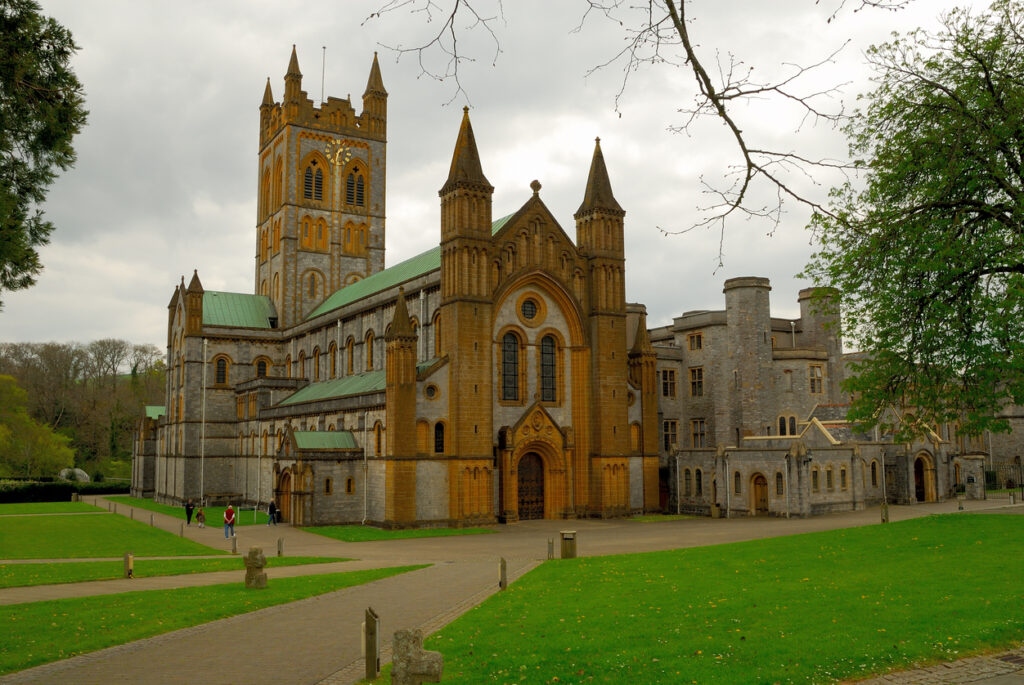
Buckfast Abbey is a must-visit for anyone exploring the county.
Founded in 1018, Buckfast has a rich history. The current Abbey was built by the monks themselves, a remarkable feat completed in 1938.
Walking through its halls, you’re stepping into a story that spans centuries. The architecture is awe-inspiring, blending medieval foundations with modern craftsmanship.
Don’t miss the relaxing gardens, and step into the exhibition to learn about the monk’s life here.
The monks who live and work here also produce the famous Buckfast Tonic Wine, a unique part of the Abbey’s heritage (a drink that’s for some reason very popular in Scotland!).
27. Explore the ancient history of Totnes Castle

Totnes Castle, a stunning example of Norman architecture, should definitely be your first stop in Totnes.
This motte and bailey castle was constructed after the Norman conquest by Juhel of Totnes, a comrade of William the Conqueror.
It boasts a 13th-century shell keep that wraps around it like a protective cloak.
Its ownership has a storied history, passing from Henry, the Earl of Cornwall’s son, to the de la Zouche family, and then to Sir Richard Edgecombe of Cotehele.
During World War II, Italian prisoners of war were held here, leaving their mark with graffiti on the trees – a poignant reminder of the castle’s varied past.
The grounds are a peaceful haven, complete with a historic moat. Climb up the steps for some of the best views in town!
28. Take a River Tamar cruise in Plymouth
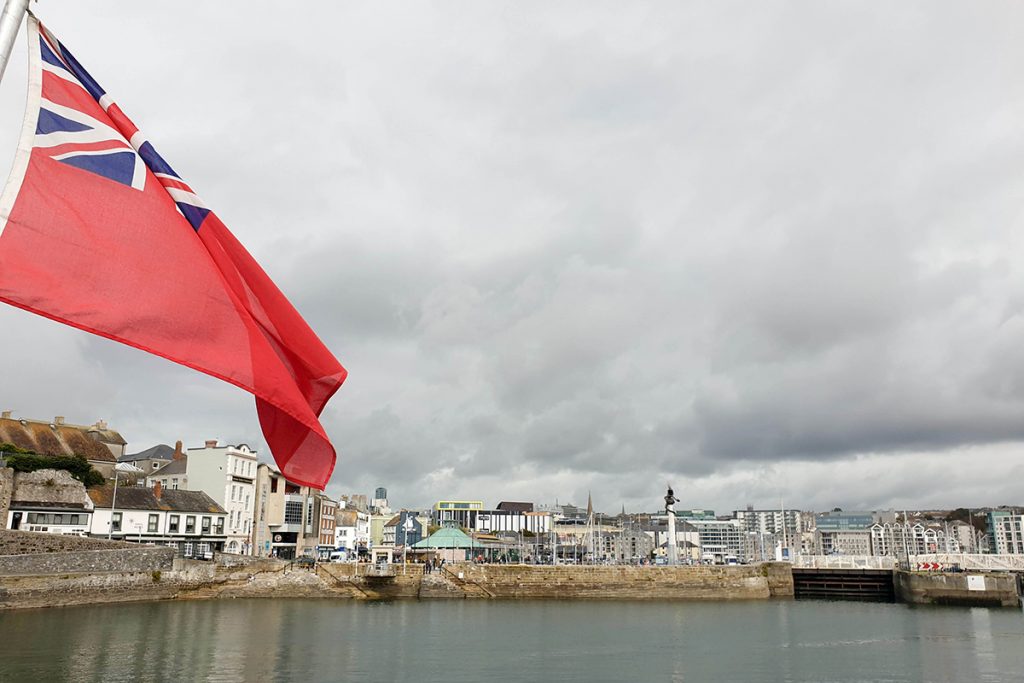
The River Tamar, the natural divide between Cornwall and Devon, has been a pivotal UK waterway for centuries.
Often regarded as one of the world’s oldest borders, it has played a significant role in shaping the region’s history and culture.
And you can see it from Devon – by taking a cruise from the Barbican in Plymouth!
You’ll hear tales of how the Tamar influenced Plymouth’s development as a city and its strategic importance as a naval port.
29. Learn about the Mayflower History in Plymouth

Discover the historic Mayflower journey right at its departure point in Plymouth.
Near the Barbican’s tourist information centre, you’ll find the Mayflower Memorial, marking the 1620 voyage of the iconic ship to the USA. This trip is well-known for carrying pilgrims, but it also had tradespeople and other passengers on board.
The Mayflower Pilgrims, initially from the UK, had to move to Leiden, Netherlands, due to their unorthodox religious beliefs.
Their struggle to integrate into Dutch society led them to seize the chance to journey to “The New World.”
They spent a few weeks in Plymouth while waiting for the Speedwell, the Mayflower’s companion ship, which was later deemed unfit for the voyage.
They finally set sail on September 16, 1620.
The Mayflower Museum, located above the tourist information centre, delves into this journey’s intricate details, including the impact on Indigenous peoples.
30. Visit the world’s oldest continuously operating gin distillery!
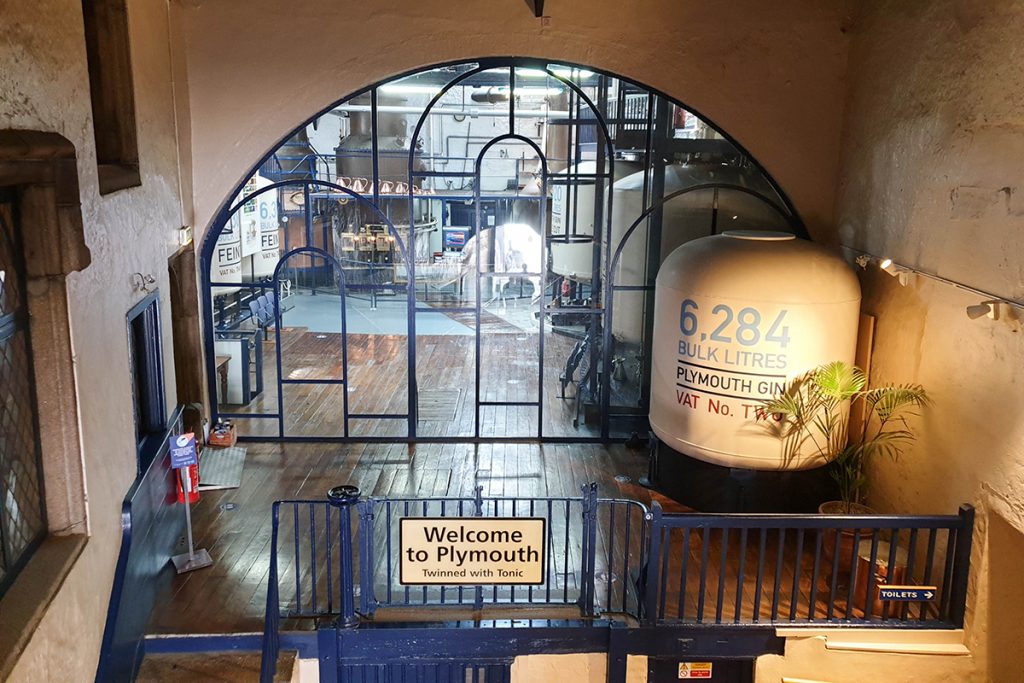
Fancy a sip of history? Head to the world’s oldest working gin distillery!
This place is a must-visit, especially if you’re a gin aficionado like me!
Located in the heart of Plymouth, Plymouth Gin Distillery offers guided tours that delve into the rich history of Plymouth gin, the art of gin making, and, of course, the best part – gin tasting!
Parts of the building date back to the 1400s, and it’s seen its fair share of history – from a monastery to a jail and even a stopover for the Mayflower pilgrims.
The distillery’s rise to fame was fueled by the Royal Navy’s preference for gin over rum, skyrocketing Plymouth Gin to global popularity.
However, times changed, and Plymouth Gin faced its share of ups and downs. Thanks to four visionary investors who revived the original 1793 recipe, the brand is enjoying a renaissance. Today, it’s a staple in bars across Plymouth and beyond.
On a gin tour, you’ll learn about the gin-making process, discover the history of the building and end with a visit to the gin bar for tastings.
Remember, pre-booking is essential!
So, are you ready to visit Devon?
Whether you want to enjoy water sports at the beaches, explore the county’s medieval towns or kick back at the English Riviera, hopefully, this post has shown you just how many incredible attractions and activities there are in Devon!
Don’t forget to check out the rest of my Devon archives for more. If you have any questions, feel free to reach out on Instagram or Facebook.


